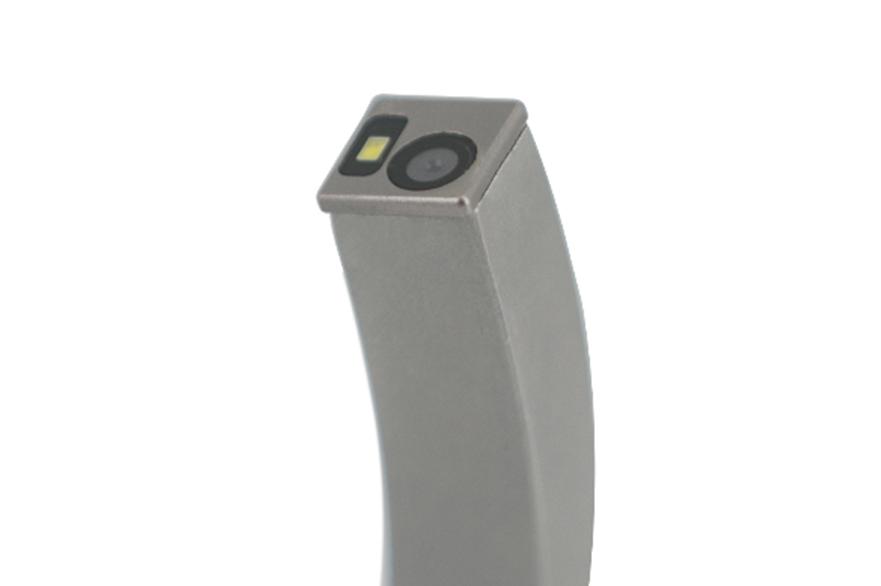Challenges and Opportunities in the Global Medical Video Scope Market
Dec 11, 2024
What if we told you that a breakthrough technology in the world of medical equipment is transforming the way doctors view and treat patients during surgery? The medical video scope is not just a high-tech tool but a game-changer, making surgeries safer, faster, and less invasive. As we witness rapid advancements in endoscopy, the medical videoscope market is poised for significant growth, improving outcomes and patient care worldwide.

Exploring the Growing Medical Videoscope Market
The global medical videoscope market has seen a remarkable surge in value, with a projected increase from USD 20.47 billion in 2023 to USD 36.24 billion by 2031. This represents a compound annual growth rate (CAGR) of 7.4% over the forecast period from 2024 to 2031. The market is expanding due to a combination of technological advancements, rising demand for minimally invasive procedures, and an aging global population requiring more endoscopic treatments. But what exactly is driving this growth, and what challenges do manufacturers and healthcare providers face in bringing medical video scopes to the forefront of patient care?
Technological Advancements in Video Scopes
Over the past decade, technological innovation has been at the heart of the medical videoscope’s development. Endoscopes have evolved significantly in terms of their design, functionality, and capability. Features such as increased viewing angles, reduced diameters, and integration with high-resolution imaging systems have revolutionized how doctors perform procedures.
For example, 3D imaging systems and high-definition cameras have elevated video scopes from basic visual aids to essential tools in complex surgeries. This allows for precise identification of abnormalities or diseases, leading to quicker diagnoses and more effective treatment plans. The ability to view internal organs and structures in real time with exceptional clarity has made minimally invasive surgeries more successful and has significantly reduced the risks traditionally associated with open surgeries.

Rise of Minimally Invasive Surgeries
One of the biggest drivers of the medical videoscope market is the growing demand for minimally invasive surgeries (MIS). Minimally invasive techniques use video scopes to explore and treat internal organs through small incisions, reducing both patient recovery time and the risk of complications. These surgeries are less traumatic compared to traditional open surgeries, which require larger cuts, longer recovery times, and higher costs.
According to recent studies, procedures like laparoscopy, endoscopy, and arthroscopy have gained widespread adoption, as they are associated with shorter hospital stays and quicker return to normal life. These benefits have resulted in more patients opting for minimally invasive procedures, propelling the need for more advanced video scopes that can deliver high-quality, real-time visual feedback.
The Impact of a Growing Elderly Population
Another critical factor contributing to the increasing demand for medical video scopes is the global rise in the elderly population. As people age, they become more susceptible to chronic conditions such as orthopedic disorders, gastrointestinal issues, and cancers—conditions that often require endoscopic procedures for diagnosis and treatment.
The medical community is increasingly relying on video scopes to manage complex cases like cancer, obesity, and gastroesophageal reflux disease (GERD). With endoscopy, doctors can perform procedures with precision and minimal invasiveness, improving patient outcomes for these common age-related health conditions. As the global population of older adults continues to grow, so does the demand for effective medical video scopes.
The Role of Compact and Portable Video Scopes
In addition to improving the quality of endoscopic procedures, manufacturers have made strides in making video scopes more portable and user-friendly. Compact systems that deliver high-definition images are becoming a staple in hospitals and clinics worldwide. Not only do they offer better visualization, but their portability allows healthcare providers to use them in a variety of settings, from emergency rooms to intensive care units (ICUs).
One notable example is the Anesthesia Video Laryngoscope. This device combines the traditional Macintosh blade with video and direct visualization technologies, offering a unique solution for airway management. It’s designed for use in a variety of clinical environments, including ICU, NICU, and emergency departments. With a no-fog camera and customizable blades, this video scope ensures rapid and accurate intubation, even in challenging cases. The compact design and optional OEM (Original Equipment Manufacturer) capabilities allow it to be tailored to different medical needs and branding requirements.
Challenges Facing the Medical Video Scope Market
Despite the immense growth potential of the medical video scope market, several challenges need to be addressed. One of the biggest hurdles is the shortage of skilled endoscopists. As the demand for endoscopic procedures grows, the need for qualified medical professionals to operate these advanced video scopes has become a critical concern. While technological advances have made the equipment easier to use, the expertise required to interpret the images and perform procedures effectively remains a limiting factor in many regions.
Another challenge is the high cost of endoscopic procedures and equipment. While video scopes are generally more cost-effective than traditional open surgeries, the initial investment in video scope systems and related technology can be significant for healthcare providers. This, combined with the need for ongoing maintenance and training, can present a barrier for smaller hospitals or clinics with limited budgets.
Future Opportunities in the Medical Video Scope Market
Looking ahead, there are numerous opportunities for growth in the medical video scope market. One area of potential is the increasing incidence of diseases that require endoscopic procedures. As the global burden of chronic conditions like cancer, obesity, and gastrointestinal diseases rises, more patients will need diagnostic and therapeutic endoscopy.

Furthermore, innovations in augmented reality (AR) and artificial intelligence (AI) could further enhance the capabilities of medical video scopes. AI-driven video analysis and AR guidance could assist physicians during procedures, improving precision and patient outcomes. There’s also growing interest in integrating video scopes with robotic surgery systems, enabling surgeons to perform even more delicate operations with greater control.
Key Players in the Medical Video Scope Market
The market for medical video scopes is highly competitive, with numerous players vying for market share. One notable company in this space is Mole Medical, a leading supplier of advanced medical video scopes. Mole Medical offers a wide range of high-performance endoscopic solutions, including portable laryngoscopes, anesthesia video laryngoscopes, and advanced diagnostic endoscopes.
Mole Medical’s commitment to innovation, product quality, and customer support has positioned it as a prominent player in the medical video scope market. Their products, such as the Video Intubation Laryngoscope, offer a range of features designed to improve airway management during intubation, including a high-resolution camera, no-fog capabilities, and easy-to-use controls. These products cater to a variety of clinical needs, including anesthesia, emergency care, and critical care departments.
Conclusion: A Bright Future for Medical Video Scopes
In conclusion, the medical videoscope market is experiencing rapid growth, fueled by technological advancements, the rise of minimally invasive surgeries, and the aging global population. While challenges such as the shortage of trained professionals and high equipment costs persist, the future looks promising with opportunities for innovation and growth. As the healthcare industry continues to embrace these technologies, video scopes will play an increasingly critical role in providing high-quality care to patients worldwide.
The ongoing development of more compact, portable, and user-friendly medical video scopes will help shape the future of medical procedures, offering doctors better tools to diagnose and treat conditions with precision and minimal patient discomfort. Whether it’s for routine diagnostic exams or complex surgeries, the medical videoscope is set to remain at the forefront of healthcare technology.
For more insights and updates on the medical video scope market, or if you’re interested in exploring the latest products from Mole Medical, feel free to reach out. The future of endoscopy is bright, and it’s just beginning.
Categories
Latest Articles

Disposable Nephroscopes: Redefining Safety & Efficiency in Urology
Introduction The shift towards minimally invasive urological surgery has found a pivotal ally: the disposable nephroscope. As traditional reusable scopes grapple with persistent biofilm contamination risks and soaring sterilization costs, the global medical community is rapidly adopting single-use solutions. This article analyzes the clinical value, technological evolution, and dynamic innovation landscape driving this transformative shift. ... Read more

Disposable Video Laryngoscope Blades: The Ultimate Solution for Preventing Cross-Contamination
In the operating room, as the cold light of a video laryngoscope illuminates a patient’s airway, an age-old medical challenge is being redefined: How can life-saving instruments avoid becoming vectors of infection? Jiangsu MoleMedical drives an innovative safety revolution—replacing reusable devices with single-use, sterile laryngoscope blades that create a pure barrier for critical airways. Traditional video ... Read more
-2.jpg)
FDA & CE Approved Video Laryngoscope: What Makes It Stand Out?
Introduction In high-pressure emergencies and precision-driven operating rooms, video laryngoscopy is revolutionizing airway management. Mole Medical’s FDA and CE-certified technology replaces tactile-dependent “blind intubation” with real-time visual navigation – enhancing safety, accuracy, and clinical outcomes worldwide. Why Certification Matters Mole Medical’s dual certifications validate its global compliance and performance: FDA Clearance: Rigorous validation of safety/efficacy ... Read more

Mole Medical Showcases Advanced Endoscopy Solutions at CMEF Autumn 2025, Driving Global Partnerships
Guangzhou, China – September 26-29, 2025 – The 92nd China International Medical Equipment Fair (CMEF Autumn) concluded successfully on September 29th at the Canton Fair Complex in Guangzhou. Mole Medical Technology Co., Ltd. (Mole Medical) made a significant impact at the event, drawing global medical professionals and partners to its booth (Hall 2.1, Stand Q24) ... Read more

How to Use Disposable Ureteroscopes Safely and Efficiently
In the field of urology, the application of disposable electronic ureteral-kidney pelvis endoscopy catheters is leading the technological innovation in minimally invasive surgeries. According to the 2024 multi-center research data from China’s urology department, among the over 5,000 surgeries included, the patient group using disposable catheters performed significantly better in key indicators such as operation ... Read more



